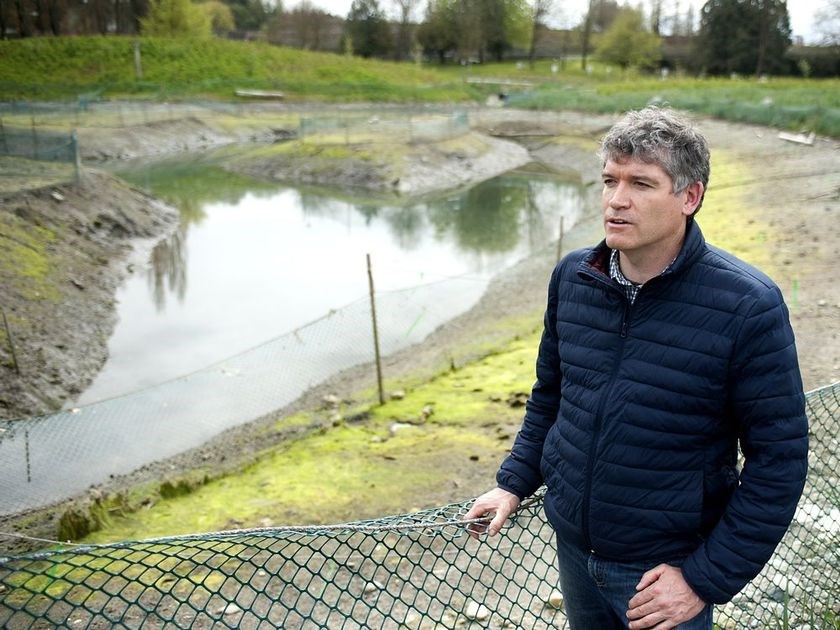VANCOUVER — Driving through Stanley Park one morning, Vancouver park board biologist Nick Page came across a bizarre scene. Cars were abandoned haphazardly along the roadside as a crowd of people ran toward the seawall.
“I thought there’d been an accident,” he recalled.
In fact, a grey whale had been spotted in the water near Siwash Rock.
The incident confirmed an idea the park board had been working on, said Page. Parks shouldn’t only be about sports fields and recreation facilities, they should also be a place where people can experience nature.
“The more urban we get, the more people support and are captivated by what we have left,” he said. “Part of our role is to ask how we can better connect people with nature. How do we make it so nature is something we see in the city?”
In 2014, the park board began work to “rewild” parks and green spaces, identifying 28 biodiversity spots that should be protected, and educating people about their importance. The main goal of the plan was to encourage ecological literacy, said Page.
“It was doing the work, but also bringing people along,” he said.
Since then, the board has been restoring some areas, including the salt marshes at New Brighton Park, while supporting environmental groups to undertake their own projects.
This winter, a huge herring spawn in False Creek surprised a conservation group that hung artificial spawning nets from the wharfs. The “billion year” spawn could eventually bring larger creatures, including seals, dolphins and orcas, to feed. Page said the park board did not lead the project by the Squamish Streamkeepers Society, but supported the group by provided material costs and access to the marina.
Overall, the city is actually “making gains” in increasing wild spaces, said the biologist.
Unlike many B.C. municipalities, which are destroying more wild spaces than they’re adding for the sake of new housing and development, Vancouver is likely gaining some natural areas.
More than a century ago, the city’s forests were cut down and streams filled in, said Page. “We’ve inherited an established landscape, which is different from most other municipalities. What we’re doing now is managing the ecological network that we have through our parks.”
He pointed to the Earth Day event Saturday at Everett Crowely Park, where volunteers planted flowering native shrubs for pollinating insects. Once the site of a garbage dump, the 38-hectare park has be reforested and “rewilded.”
Page said he doesn’t think major gains have been made in bringing more streams back to the city, but the surviving waterways are being protected and enhanced as much as possible. He’s happy when he sees a daycare making daily visits to the site of a beaver dam to check for activity.
But with interest and engagement in wild spaces also comes the risk of “over-love.”
While it’s desirable for someone to appreciate the sea ducks in Stanley Park, an off-leash dog can do serious damage the sensitive ecosystem, said Page. “How do we protect areas, but also educate people about them?”
It’s a balance that needs to be struck on every project. At the restored salt marshes in New Brighton Park, for example, a reforested area protects the shore, and fences keep people on designated trails. Signage warns people to put their dogs on leash near wetlands.
Increasing density also puts more demand on natural spaces within the city, presumably bringing more people to parks. Anyone trying to walk the Stanley Park seawall on a sunny weekend will recognize the issue.
“Too many people in any one area can disperse nature,” said Page.“We recognize this, but it can be a hard thing to change.”
On the brighter side, a growing population also means a growing body of volunteers to help with restoration work.



